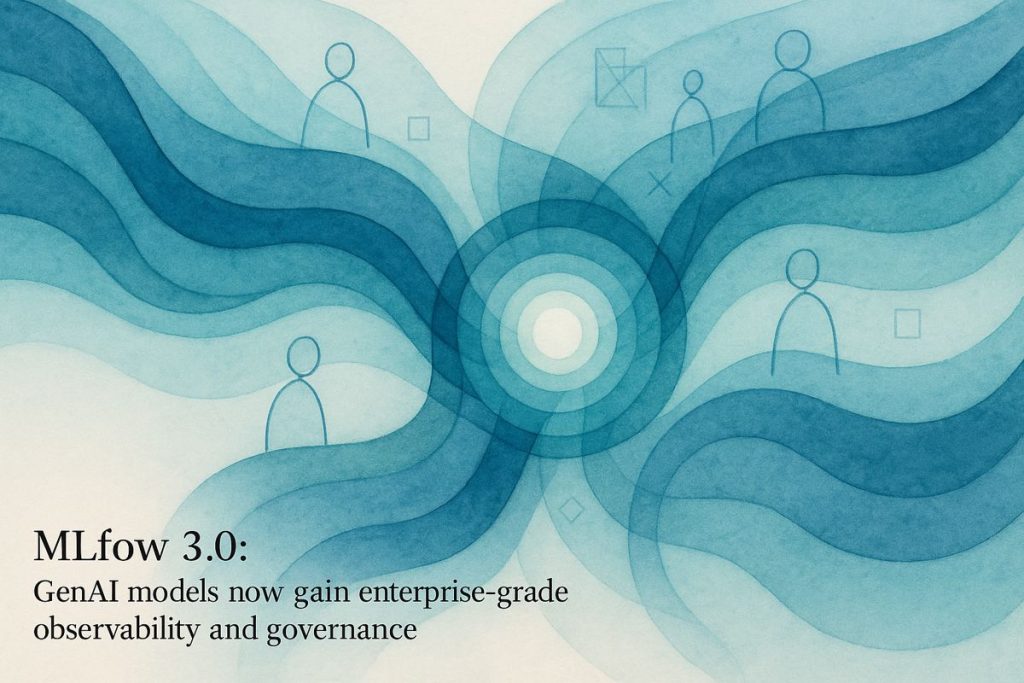MLflow 3.0 is a huge upgrade, focusing on making AI models easier to watch, understand, and manage, especially for tricky GenAI systems. The new LoggedModel keeps everything about your models organized, while advanced tracing and feedback tools let you track every step and decision, making debugging and improvement much simpler. Integrated with Databricks’ Unity Catalog, governance and regulatory checks are smoother, turning messy audits into a breeze. With these tools, handling complex AI is less like herding cats—and more like flipping through a smart, digital guidebook.
What are the key new features of MLflow 3.0 for GenAI observability and governance?
MLflow 3.0 introduces a model-centric approach with the LoggedModel, advanced trace management for GenAI prompt chains, integrated human and LLM-based feedback evaluation, seamless regulatory audit trails, and enhanced governance via Databricks’ Unity Catalog—making AI observability, debugging, and compliance easier and more comprehensive than ever.
A New Era Dawns: MLflow 3.0 and the Great Model Shift
There’s something quietly exhilarating about opening up a new release note for a tool as central as MLflow—like the first whiff of espresso in a cold, silent lab at 7:03am. MLflow 3.0 is here, and, no exaggeration, it’s a bit of a palimpsest: layers of the old, overlaid (sometimes jarringly) with the new. This isn’t just a version bump; it’s the tectonic shudder you feel when a project decides to pivot from “run-centric” to “model-centric.” Did I see this coming? Maybe. Did I expect it to be this comprehensive? Not a chance.
Enter the LoggedModel . Imagine it as the heart of an intricate machine, not just pumping lifeblood through traditional ML models, but also keeping the GenAI agents and deep learning checkpoints humming in sync. I once tried to trace the lineage of an LLM-powered chatbot I’d shipped in a hurry—the tangle of experiments, prompt tweaks, and checkpoint saves felt like spelunking in a cave with a flashlight running low on batteries. MLflow 3.0, by elevating the model itself to the main stage, lets you see the whole family tree—warts, stunted branches, and all. Think of it as a hyperspectral lens for your model zoo.
And here’s the kicker: whether you’re juggling OpenAI’s GPT-4, Databricks’ Unity Catalog, or a homegrown concoction, this new approach makes the comparison and lineage tracking feel less like sifting through a dusty archive and more like flipping through a well-indexed digital palimpsest.
Observability: From Vague Notions to Concrete Insights
Now, let’s talk observability. If you’ve ever tried to debug a multi-step GenAI prompt chain—with outputs that veer off like a jazz solo gone rogue—you know the pain. MLflow 3.0’s new trace management is like finally getting sheet music for the improvisation: you can annotate, dissect, and trace every request and response, from first ping to final hallucination.
I confess, when I first saw the “integrated feedback loops” in the documentation, I rolled my eyes. “How scalable can this really be?” I muttered, clutching my mug. But—bam!—the API (mlflow.genai.evaluate()) is actually intuitive. It lets you surface metrics that matter in the real world: latency (measured in milliseconds, not hand-waving), compliance checks, safety evaluations, even subjective metrics like relevance and correctness. For the first time, it felt like I could smell the difference between a well-tuned model and one about to go off the rails—a faint metallic tang of anticipation.
The real game-changer, though, is being able to plug in both human evaluators and automated LLM-based judges. It’s like having a Greek chorus and a robotic inspector peering over your shoulder, critiquing every AI soliloquy. And when you realize feedback and trace data are all logged, cross-referenced, and ready for regulatory scrutiny? Relief, with a twist of schadenfreude for anyone still cobbling together spreadsheets.
Governance and Deployment: Herding Cats, Only Easier
In the world of enterprise AI, especially for those in the pharma or life sciences trenches, governance is less a best practice than an existential necessity. I once lost two weeks chasing down a rogue model version for a compliance audit—never again. MLflow 3.0’s orchestration via Lakeflow Jobs, combined with Unity Catalog’s metadata management, means you’re not just logging steps; you’re building a living, breathing audit trail.
Here’s where the Databricks partnership really sings. By fusing MLflow 3.0 with Databricks’ lakehouse architecture, you gain a kind of panoramic oversight—think satellite imagery versus hand-drawn maps. Databricks, with its Unity Catalog, merges model versioning with full-bore analytics, letting you launch, watch, and wrangle deployments—all with that comforting whiff of regulatory compliance.
If you’re deploying on Azure or AWS, fear not: Azure Databricks MLflow Integration Guide and AWS Databricks MLflow Installation Guide have you covered. The bar for enterprise governance just got higher—and, paradoxically, easier to reach.
The GenAI Conundrum: New Problems, New Tools
Generative AI isn’t just another buzzword. It’s a Pandora’s box of complexity—outputs that can’t be judged by mere accuracy anymore, but must align with a shifting thicket of business logic, ethics, and legal nuance. The old tricks don’t cut it. MLflow 3.0 steps in with tools for evaluating not just if your AI is correct, but if it’s appropriate . (I still chuckle, remembering the time a “helpful” chatbot offered baking recipes after a compliance prompt—oops.)
Debugging those aforementioned prompt chains? The new tracing tools are a godsend. Step-by-step, you can see where the jazz improv goes off-key, annotate the missteps, and—perhaps—avoid the embarrassment of your model riffing out of tune in front of an auditor.
And let’s talk compliance. In life sciences, not tracking model decisions is tantamount to professional malpractice. MLflow 3.0’s observ
